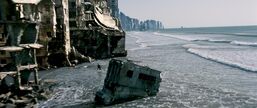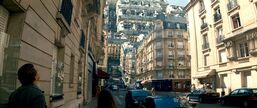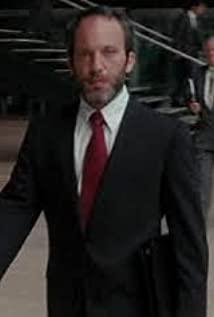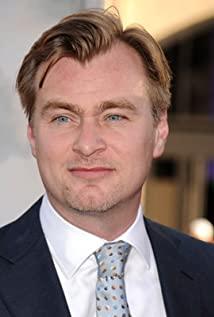If the story is taken apart, there is actually nothing new in the narrative, very standard Hollywood logic. For example, the protagonist has an immature mental/psychological trauma that needs to be addressed through narrative development, and is eventually resolved (in the film, it is Cobb's guilt for his wife's suicide by implanting a fictional idea in her mind); the protagonist There is a goal that needs to be completed within a certain period of time. If it is not completed, it will "explode", which is the so-called "time lock". ;The four layers of dreams can be regarded as four independent stories, each of which is a simple "time lock" structure (the protagonist has a set goal, which must be completed within a certain period of time, otherwise he will be woken up by kick, but there is a negative Force crosses obstruction). The dream logic or dream-making theory that composes several layers of stories together and runs through the whole film is the biggest gimmick of the film (a lot of film critics and spoilers have already explained this logic in detail, so I won't repeat it), its real effect , is to show the extension of film time and space.
Space: Creating a space that is believable and beyond reality is one of the directions that filmmakers have been making unremitting efforts for a long time. In order to create a sense of spatial depth in the two-dimensional film space, the film set designers in the 1920s once reduced the distant scene to a certain proportion, artificially created a more obvious perspective, to make up for the scene in the black and white film due to technical reasons. It seems to lack depth and become flat, artificially creating a kind of unreal "reality" felt by the eyes. When newer technology can only add icing on the cake in the plane space, or use 3D technology to create a deeper three-dimensional sense, this film uses the combination of narrative logic and technology to subtly break through the multi-layer space at the same point in time. The dreamer can design the whole world freely, and the current dream will be affected by the "real world" (or the previous dream) that produced this dream, so each layer of the world is completely different, but interconnected. For example, the body of the person in the upper world is tilted, and the world in this dream will be tilted. The logic of dreams in narrative is just like another "reduction technique" that achieves "perspective effect". In each layer of dream space, the common scenes in surrealist paintings such as the folded sphere connecting the sky and the ground, the Mobius circular staircase, etc., in a film that is not labeled as an experimental film, are "logical". The way is presented in front of the audience, bringing a deeper sense of surreal realism. This kind of nesting of reality and fantasy, which develops countless layers of space, is the infinite space created by the little girl in the film with two mirrors (the mirror in the toilet of the British Museum is like this, with a mirror on each wall, people standing in it constantly mapped in multi-layer space).
Time: In general, the time in a movie is the presentation of a certain period of time, such as the psychological time inserted in flashbacks, and the physical time in the film. Each time period is arranged in sequence. But the time in this film includes the physical time in the real world, the psychological time in the created dream, and the physical time in the dream. These different times are also nested and co-exist under the arrangement of narrative logic. Of course, the film also designed a time difference between different spatial layers, an hour in a dream may only be a few minutes in reality. This is in line with the reality of dreaming in life, and provides more possibilities for the development of film narratives.
The innovation and conservatism of time and space of the film are concentrated in the deformed "last minute rescue" in the last paragraph. Dreams from each layer are about to be awakened, but the people in the dreams of each layer must complete the tasks before the specified time, and the tasks of each layer are to ensure the completion of the task of the fourth layer of dreams. Different from the classic Griffith's Last Minute Rescue, this film crosses four different time-spaces in parallel, and each time-space has a difference in time speed, that is, parallel and non-parallel, and some spaces are shot from the same perspective (eg. The falling of the bridge), and some spaces emphasize movement changes from different perspectives (elevator blasting). But this design holds up the last paragraph, which is long and dull after zooming in and repeating it many times.
When all the novelties have been stripped away layer by layer, one can't help but smile: such a seemingly novel movie is ultimately completed by the narrative structure of classic Hollywood movies. Including the extension of time and space, it is also inseparable from the traditional methods of Hollywood movies, so I can't tell whether the old skills of this movie are perfect, and whether it is an innovation.
I think the so-called "philosophical question" of reality or dream in the film is a pseudo-question. How to say what philosophical meaning this film has, I think it should also be brought about by the film media itself about the relationship between perception and existence. think. But that's another question, and maybe I'll talk about it later in another article.
View more about Inception reviews











